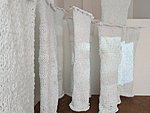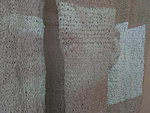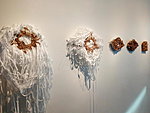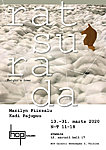About the idea for the exhibition.
The
checked wooden box was placed on the top of the bookshelf. The chess
pieces were not allowed to be taken to the play corner even if the
four knights seemed to scream and to neigh in order to be part of the
games not restricted by the quandrangular black-and-white square.
When the box was taken down, the sound of the chess pieces thudding
could be heard. The black and white armies were lined up to their
starting positions. The pieces made soft noise, their bottoms had
dark-red felt circles glued underneath. Openings, maneuvres,
sacrifices, checks were taken place. When the rules were clear, we
learned that the knight could jump over the other pieces and while
always being on a square of an opposite colour after the jump. The
black square is followed by the white one and the other way round. It
was sad to sacrifice the knight since it had a face and had witty
moves: two moves to one direction, and then one to aside. It was much
easier to give up the bishop.
The
knight is related to several interesting mathematical problems: what
is the trajectory of the knight in order to cover the whole
chess board while touching every square only once. The title of our
exhibition - Knight's Tour - was namely inspired by this
comprehensive logic of this journey so similar to construction of
textile structures: to be in every moment (looping-knotting-crossing)
only once, to be present. The created artwork relates to the
sediments of similar journeys layer by layer, line by line, resulting
in stalactites, spatial white wholes providing reconciliation for the
absence of winter.




